Margret Fuchs
Electrolyzers-HSI: Close-Range Multi-Scene Hyperspectral Imaging Benchmark Dataset
May 26, 2025
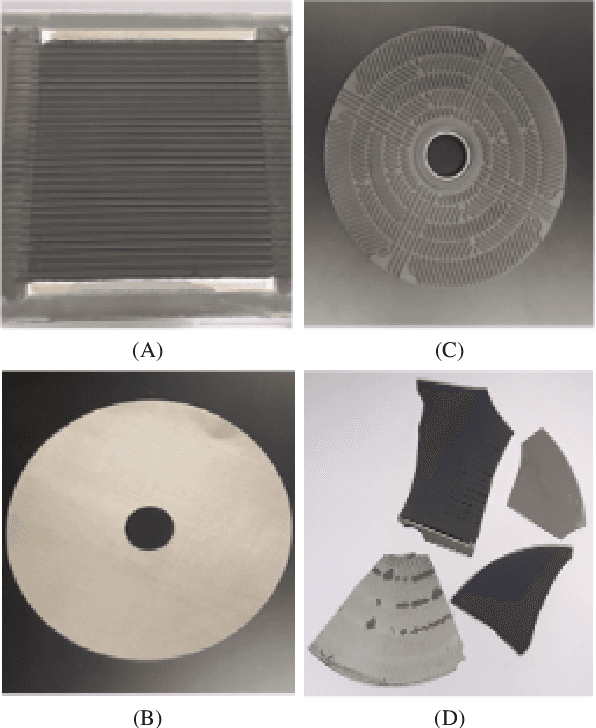

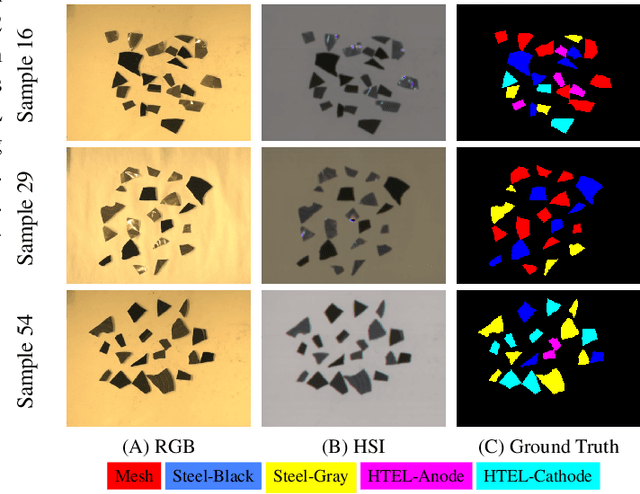
Abstract:The global challenge of sustainable recycling demands automated, fast, and accurate, state-of-the-art (SOTA) material detection systems that act as a bedrock for a circular economy. Democratizing access to these cutting-edge solutions that enable real-time waste analysis is essential for scaling up recycling efforts and fostering the Green Deal. In response, we introduce \textbf{Electrolyzers-HSI}, a novel multimodal benchmark dataset designed to accelerate the recovery of critical raw materials through accurate electrolyzer materials classification. The dataset comprises 55 co-registered high-resolution RGB images and hyperspectral imaging (HSI) data cubes spanning the 400--2500 nm spectral range, yielding over 4.2 million pixel vectors and 424,169 labeled ones. This enables non-invasive spectral analysis of shredded electrolyzer samples, supporting quantitative and qualitative material classification and spectral properties investigation. We evaluate a suite of baseline machine learning (ML) methods alongside SOTA transformer-based deep learning (DL) architectures, including Vision Transformer, SpectralFormer, and the Multimodal Fusion Transformer, to investigate architectural bottlenecks for further efficiency optimisation when deploying transformers in material identification. We implement zero-shot detection techniques and majority voting across pixel-level predictions to establish object-level classification robustness. In adherence to the FAIR data principles, the electrolyzers-HSI dataset and accompanying codebase are openly available at https://github.com/hifexplo/Electrolyzers-HSI and https://rodare.hzdr.de/record/3668, supporting reproducible research and facilitating the broader adoption of smart and sustainable e-waste recycling solutions.
PCB-Vision: A Multiscene RGB-Hyperspectral Benchmark Dataset of Printed Circuit Boards
Jan 12, 2024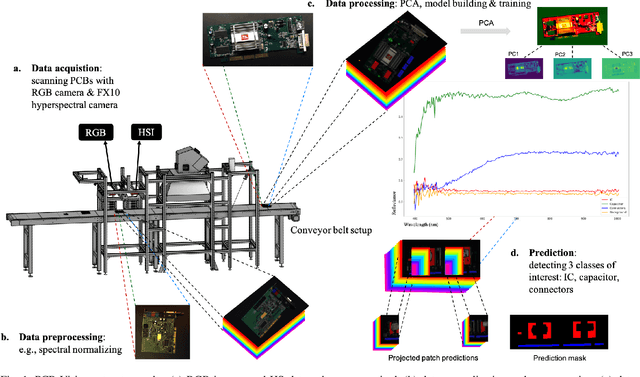
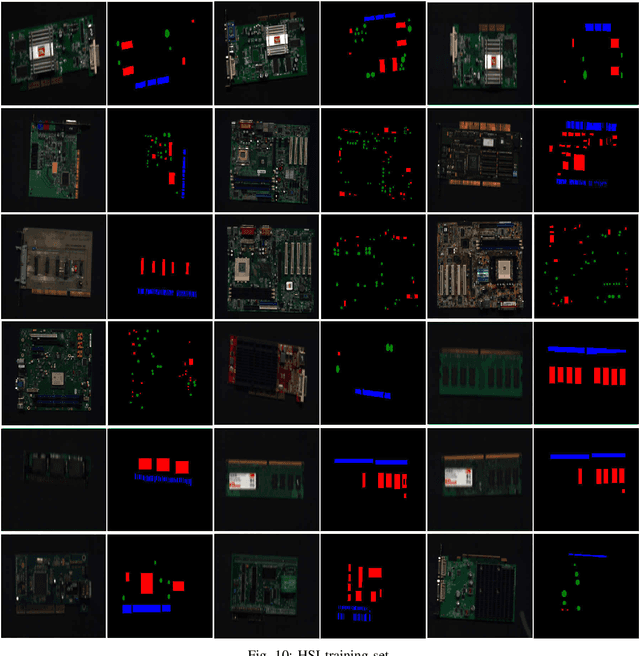
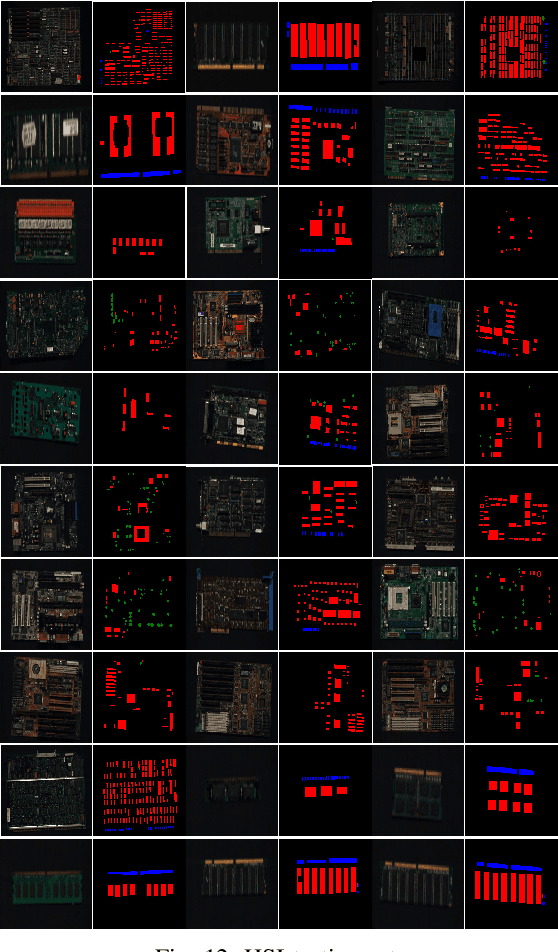
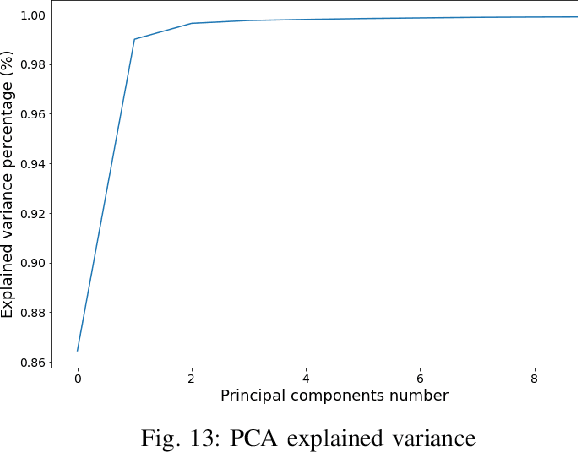
Abstract:Addressing the critical theme of recycling electronic waste (E-waste), this contribution is dedicated to developing advanced automated data processing pipelines as a basis for decision-making and process control. Aligning with the broader goals of the circular economy and the United Nations (UN) Sustainable Development Goals (SDG), our work leverages non-invasive analysis methods utilizing RGB and hyperspectral imaging data to provide both quantitative and qualitative insights into the E-waste stream composition for optimizing recycling efficiency. In this paper, we introduce 'PCB-Vision'; a pioneering RGB-hyperspectral printed circuit board (PCB) benchmark dataset, comprising 53 RGB images of high spatial resolution paired with their corresponding high spectral resolution hyperspectral data cubes in the visible and near-infrared (VNIR) range. Grounded in open science principles, our dataset provides a comprehensive resource for researchers through high-quality ground truths, focusing on three primary PCB components: integrated circuits (IC), capacitors, and connectors. We provide extensive statistical investigations on the proposed dataset together with the performance of several state-of-the-art (SOTA) models, including U-Net, Attention U-Net, Residual U-Net, LinkNet, and DeepLabv3+. By openly sharing this multi-scene benchmark dataset along with the baseline codes, we hope to foster transparent, traceable, and comparable developments of advanced data processing across various scientific communities, including, but not limited to, computer vision and remote sensing. Emphasizing our commitment to supporting a collaborative and inclusive scientific community, all materials, including code, data, ground truth, and masks, will be accessible at https://github.com/hifexplo/PCBVision.
Masking Hyperspectral Imaging Data with Pretrained Models
Nov 06, 2023



Abstract:The presence of undesired background areas associated with potential noise and unknown spectral characteristics degrades the performance of hyperspectral data processing. Masking out unwanted regions is key to addressing this issue. Processing only regions of interest yields notable improvements in terms of computational costs, required memory, and overall performance. The proposed processing pipeline encompasses two fundamental parts: regions of interest mask generation, followed by the application of hyperspectral data processing techniques solely on the newly masked hyperspectral cube. The novelty of our work lies in the methodology adopted for the preliminary image segmentation. We employ the Segment Anything Model (SAM) to extract all objects within the dataset, and subsequently refine the segments with a zero-shot Grounding Dino object detector, followed by intersection and exclusion filtering steps, without the need for fine-tuning or retraining. To illustrate the efficacy of the masking procedure, the proposed method is deployed on three challenging applications scenarios that demand accurate masking; shredded plastics characterization, drill core scanning, and litter monitoring. The numerical evaluation of the proposed masking method on the three applications is provided along with the used hyperparameters. The scripts for the method will be available at https://github.com/hifexplo/Masking.
A Multisensor Hyperspectral Benchmark Dataset For Unmixing of Intimate Mixtures
Aug 30, 2023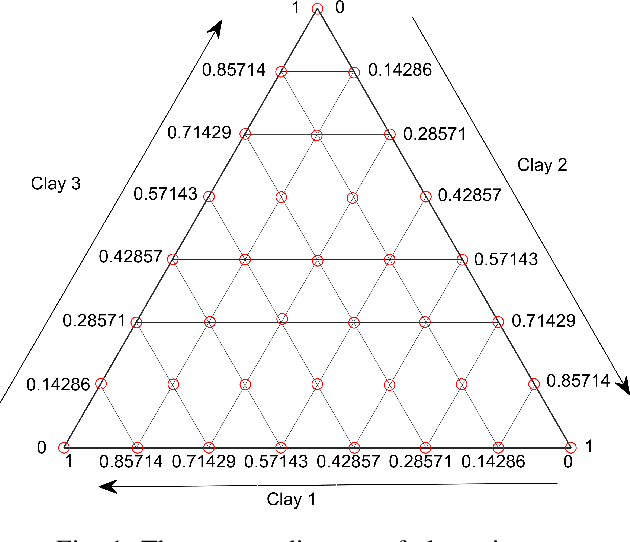
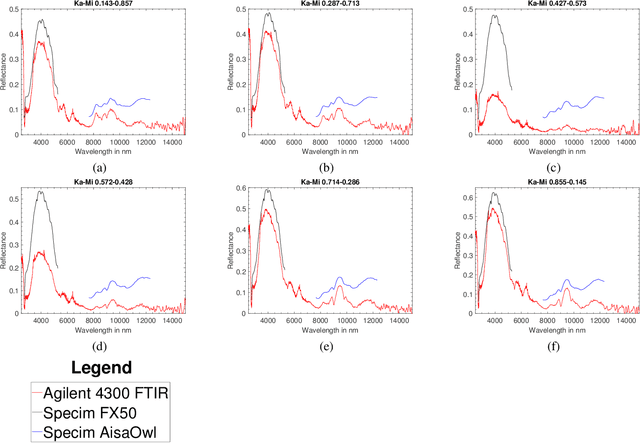
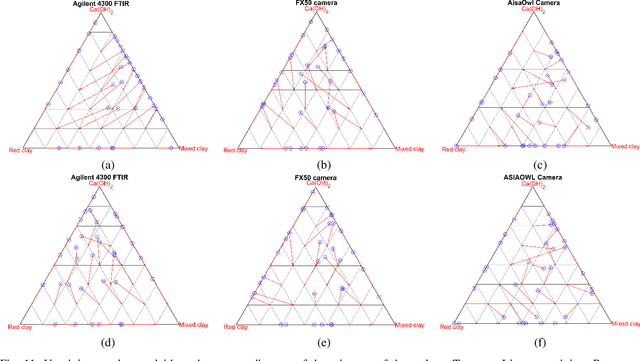
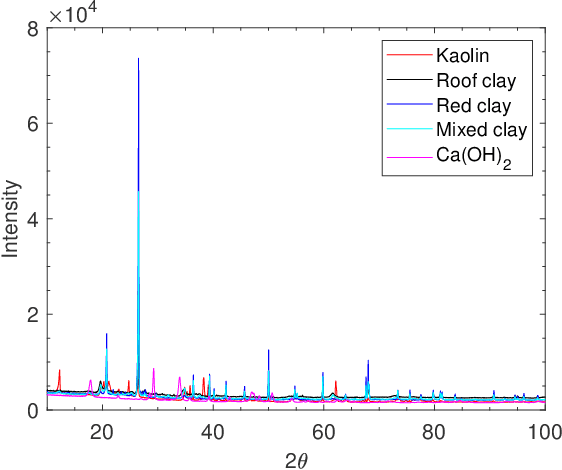
Abstract:Optical hyperspectral cameras capture the spectral reflectance of materials. Since many materials behave as heterogeneous intimate mixtures with which each photon interacts differently, the relationship between spectral reflectance and material composition is very complex. Quantitative validation of spectral unmixing algorithms requires high-quality ground truth fractional abundance data, which are very difficult to obtain. In this work, we generated a comprehensive laboratory ground truth dataset of intimately mixed mineral powders. For this, five clay powders (Kaolin, Roof clay, Red clay, mixed clay, and Calcium hydroxide) were mixed homogeneously to prepare 325 samples of 60 binary, 150 ternary, 100 quaternary, and 15 quinary mixtures. Thirteen different hyperspectral sensors have been used to acquire the reflectance spectra of these mixtures in the visible, near, short, mid, and long-wavelength infrared regions (350-15385) nm. {\color{black} Overlaps in wavelength regions due to the operational ranges of each sensor} and variations in acquisition conditions {\color{black} resulted in} a large amount of spectral variability. Ground truth composition is given by construction, but to verify that the generated samples are sufficiently homogeneous, XRD and XRF elemental analysis is performed. We believe these data will be beneficial for validating advanced methods for nonlinear unmixing and material composition estimation, including studying spectral variability and training supervised unmixing approaches. The datasets can be downloaded from the following link: https://github.com/VisionlabUA/Multisensor_datasets.
 Add to Chrome
Add to Chrome Add to Firefox
Add to Firefox Add to Edge
Add to Edge